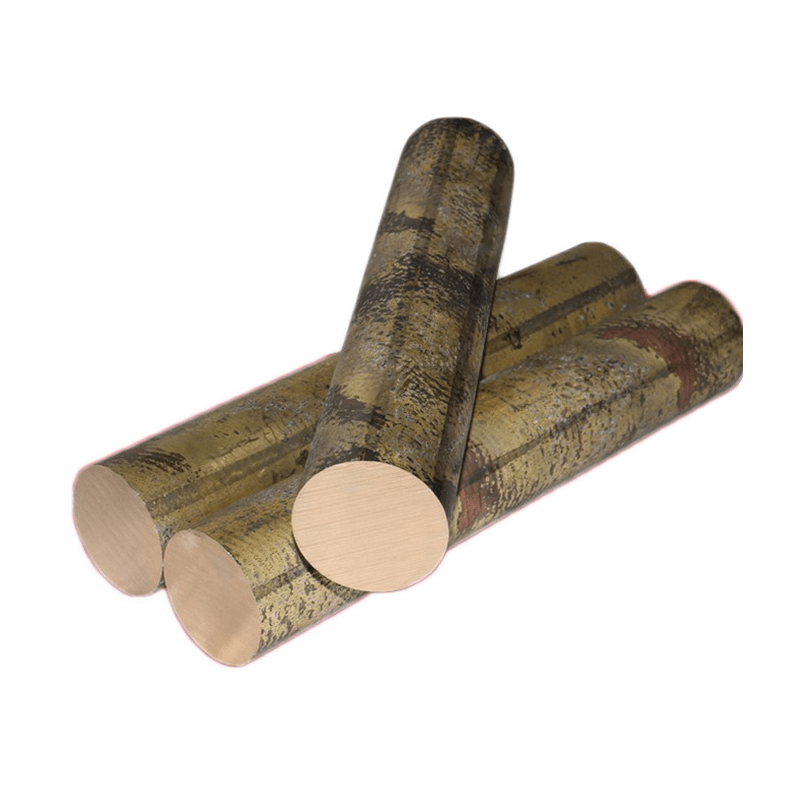
UNS C62300とUNS C62400銅合金の詳細な比較を示します。これは、理解のためにセクションと表に構成されています。この比較分析には、重要なプロパティ、パフォーマンスメトリック、業界アプリケーション、処理方法などが含まれます。
UNS C62300とUNS C62400銅合金の比較
導入
UNS C62300およびUNS C62400 どちらも、優れた機械的および腐食耐性特性で知られているアルミニウムブロンズ合金です。彼らは、特に海洋、ポンプ、バルブのコンポーネント、さまざまな業界でアプリケーションを見つけています。類似点にもかかわらず、エンジニアや材料科学者が理解するために不可欠な構成、パフォーマンス、およびアプリケーションに明確な違いを示します。
化学組成
これらの合金の化学組成は、その機械的特性と性能特性に大きく影響します。以下は、それらの元素の内容の比較です。
| 要素 | C62300(%コンテンツ) | C62400(%コンテンツ) |
|---|---|---|
| 銅 | 82.2 - 89.5 | 82.8 - 88.0 |
| アルミニウム(Al) | 8.5 - 11.0 | 10.0~11.5 |
| 鉄(Fe) | 2.0 - 4.0 | 2.0 - 4.5 |
| マンガン(Mn) | ≤0.6 | ≤ 0.3 |
| シリコン(Si) | ≤ 0.25 | ≤ 0.25 |
| 錫(Sn) | ≤ 0.5 | ≤0.2 |
| 他の | ≤ 0.5 | ≤ 0.5 |
機械的性質
強度、硬度、延性を含む機械的特性は、特定の用途にこれらの合金の適合性を決定します。これらのプロパティの詳細な見方は次のとおりです。
| プロパティ | C62300 | C62400 |
|---|---|---|
| 硬度(ロックウェルB) | 89 | 92 |
| 抗張力 | 605 MPa | 655MPa |
| 降伏強さ | 305 MPa | 330 MPa |
| 破断伸び | 15% | 14% |
| 弾性率 | 117GPa | 117GPa |
| ポアソン比 | 0.34 | 0.34 |
| シャルピーインパクト | 25.0 - 40.0 j | 15.0J |
| izodの衝撃 | 43.0 - 47.0 j | 23.0 j |
| 疲労強度 | 200 MPa | 235 MPa |
| 被削性 | 50 | 50 |
| せん断弾性率 | 44 GPA | 44 GPA |
さまざまな温度でのパフォーマンス
高温およびさまざまな温度でのパフォーマンスは、過酷な環境でのアプリケーションにとって重要です。以下は、各合金が熱的にどのように機能するかの比較です。
| 財産 | C62300 | C62400 |
|---|---|---|
| 融点 | 1041°C(1905°F) | 1027°C(1880°F) |
| 熱膨張係数 | 16.2 µm/m°C(9.00 µin/in°F) | 16.5 µm/m°C(9.17 µin/in°F) |
| 熱伝導率 | 54.4 w/mk(378 btu in/hr.ft²°f) | 58.6 w/mk(407 btu in/hr.ft²°f) |
産業用途
好ましい特性により、両方の合金は、特に困難な環境でさまざまな用途で利用されています。
| 応用 | C62300 | C62400 |
|---|---|---|
| バルブコンポーネント | はい | はい |
| ポンプコンポーネント | 限定 | はい |
| 海洋機器 | はい | はい |
| 高強度ファスナー | はい | はい |
| ポールラインハードウェア | はい | はい |
形状とサイズ
さまざまな形状やサイズのこれらの合金の入手可能性により、さまざまな製造プロセスに汎用性が高くなります。
| 属性 | C62300 | C62400 |
|---|---|---|
| 利用可能な形状 | ロッド、バー | ロッド、バー |
| 標準サイズ | 様々な | 様々な |
| 一般的なフォーム | シート、プレート | シート、プレート |
製造基準
両方の合金は、品質保証のためのさまざまな国内および国際基準を遵守しています。
| 標準 | C62300 | C62400 |
|---|---|---|
| ASTM | B124、B150 | B150 |
| 私のように | SB150 | SB150 |
| サエ | J461、J463 | J461、J463 |
溶接・加工
これらの合金を溶接して形成する能力は、製造業に適用するために不可欠です。
| 加工方法 | C62300 | C62400 |
|---|---|---|
| 溶接適合性 | ガスシールド、スポット、ろう付け、お尻 | ガスシールド、スポット、ろう付け、お尻 |
| 推奨される溶接方法 | はんだ付けやオキシアセチレン溶接はありません | はんだ付けやオキシアセチレン溶接はありません |
| 温度範囲の鍛造 | 705〜872°C(1300〜1600°F) | 760〜885°C(1400〜1625°F) |
| 熱間加工 | 良い容量 | 良い容量 |
| 冷間加工 | 良い容量 | 能力が低い |
| アニーリング温度範囲 | 594〜649°C(1100〜1200°F) | 594〜650°C(1100〜1200°F) |
長所と短所
これらの合金の利点と制限を理解することは、材料の選択に不可欠です。
| 属性 | C62300 | C62400 |
|---|---|---|
| 利点 | 優れた強度、耐食性 | 熱処理に適した高強度 |
| 短所 | 中程度のコールドワーキング性 | 寒い作業性が悪い |
類似製品
これらの合金は、他の銅ベースの合金と特性を共有し、特定のニーズに基づいて代替品を提供します。
| 類似製品 | プロパティ |
|---|---|
| アルミニウム青銅合金 | C62300およびC62400に匹敵する高腐食抵抗と強度。 |
| 銅ニッケル合金 | 海洋用途向けの優れた腐食抵抗。 |
同様の製品の簡単な比較
| 製品 | 耐食性 | 強さ | アプリケーション |
|---|---|---|---|
| US C62300 | 高い | 適度 | 海洋、バルブ、ポンプ |
| US C62400 | より高い | 高い | ポンプ、高強度ファスナー |
| 銅ニッケル合金 | 非常に高い | 適度 | 海洋、配管 |
結論
要約すると、UNS C62300とUNS C62400合金の両方が、高強度と腐食抵抗を必要とする産業にとって貴重な選択肢を提示します。それらの異なる特性と構成は、海洋機器から産業部品まで、さまざまな用途に対応しています。適切な合金を選択すると、熱性能、機械的強度、製造プロセスなどの特定の要件に依存します。これらのニュアンスを理解することで、エンジニアとメーカーがプロジェクトに情報に基づいた決定を下すことができます。さらに質問がある場合、またはより具体的な情報が必要な場合は、お気軽にお問い合わせください!
